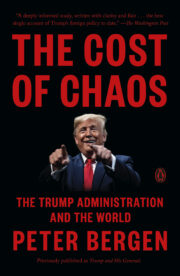Jun 17, 2021
Finally, the US gets a strategy on fighting domestic terrorism, CNN.com
For the first time the United States has a government-wide strategy to counter domestic terrorism. The policy, which the Biden administration rolled out on Tuesday, is long overdue.
After all, the most lethal terrorist attack in the United States before 9/11 was the bombing of the Oklahoma City Federal Building a quarter of a century ago, in which 168 people were killed by right-wing terrorists.
In recent years, right-wing extremists have carried out a number of lethal attacks, such as the <>assault in El Paso, Texas in 2019 that killed 22 people, the attack at a Pittsburgh synagogue a year earlier that <>killed 11 people and the attack at a Black church in Charleston, South Carolina in 2015 that killed nine congregants.
And in January, there was the unprecedented assault on the US Capitol by right-wing extremists seeking to overturn the results of the presidential election.
The new strategy issued by the White House points out that the domestic terrorism threat is principally from "racially or ethnically motivated violent extremists... and militia violent extremists" who present "the most persistent and lethal threats."
The strategy explains that these domestic extremists "often radicalize independently" because of what they are reading online "making detection and disruption difficult."
The difficulty of stopping "lone actor" terrorists also characterized US government efforts after 9/11 when it came to preventing Americans from radicalizing because of propaganda from al-Qaeda or ISIS that they had read online. Omar Mateen, for instance, killed 49 people at an Orlando nightclub in 2016. Mateen had no contact with ISIS, yet he had become radicalized by what he had read and seen online and in the name of ISIS he carried out the most lethal act of terrorism in the US since the 9/11 attacks.
The issue is also made more complicated because being a radical is, of course, not a crime in the US, given the First Amendment, and relatively few people with radical ideas actually turn to violence.
So how do you stop radicals from committing violent acts?
The White House strategy rests on a number of actions. First, by acquiring a better government-wide understanding of the scope of these threats, which can come not only from extremists motivated by white supremacism but also from, for example, anti-abortion activists, animal rights and environmental militants, and so called "incel" -- involuntary celibate -- extremists.
Domestic extremists in the borderless world of the Internet are also communicating and in some cases training with extremist groups overseas. Indeed, it was for these types of reasons that the Trump administration for the first time an overseas white supremacist group, the Russian Imperial Movement, as a Foreign Terrorist Organization in 2020.
The Biden administration also plans to designate foreign militant groups if domestic extremists are receiving support or training from them.
The White House, sensibly, intends to enforce "legal prohibitions that keep firearms out of dangerous hands."
The US government will make also publicly available a "Mobilization Indicators" booklet "that will include for the first-time potential indicators of domestic terrorism--related mobilization," which is the kind of information that will be useful to local law enforcement, as there is often a "pathway to violence" that violent extremists predictably go down, beginning with their "grievance" and ending with a violent act.
The government will disseminate more widely intelligence about "domestic terrorism iconography, symbology, and phraseology," since this is often closely held information by extremists. And the government will work to more strongly enforce laws already on the books prohibiting the existence of private militias.
The White House asserts that the "2022 Budget will include significant additional resources for the Department of Justice and Federal Bureau of Investigation to ensure that they have the analysts, investigators, and prosecutors they need to thwart domestic terrorism."
For its part, the Department of Defense will do more work to educate those with military training about how they might be recruited by violent extremists, and there will be better mechanisms by which veterans can "report recruitment attempts by violent extremist actors."
And, of course, the US government will do its best to work with the private sector to reduce the amount of online terrorist content, by providing Internet companies with information that will help them enforce their own terms of service, which prohibit terrorism-related activities on their platforms.
This was also an issue when ISIS was at its height from 2015 to 2016 and when it was recruiting online many dozens of Americans to fight in Syria and Iraq or encouraging its followers to carry out lethal attacks in the United States.
These are all commonsense measures which will help to reduce the scourge of domestic terrorism. Most importantly the new strategy shows that the US government has finally adopted an overall approach to counter the threat posed by the violent extremists living among us.
Opi
MORE ARTICLES 
FEATURED BOOK

